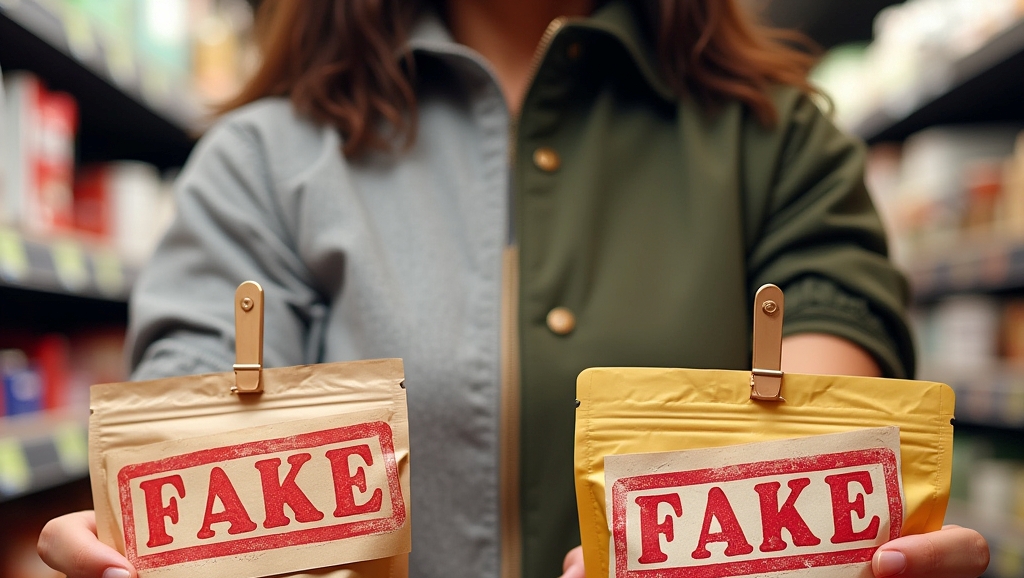This article is written by Akshay Gendle. It discusses in detail Section 126 of the Trade Marks Act, 1999. This article explains the concept of marked goods, implied warranties, and their types, such as implied warranty of merchantability and implied warranties of fitness for a particular purpose. Lastly, it explains the implied warranty in the case of marked goods with relevant case law and gives a global perspective of implied warranties.
Table of Contents
Introduction
We often see logos, marks, and taglines on many products in the market. They create both positive and negative perceptions in our minds. Some brands even denote trust; for instance, TATA, Mahindra, etc. We believe that if we are buying some product from these brands, it will be of the best quality and reliability. This trust in the minds of people plays a crucial role in helping these brands stay relevant and successful in the competitive market.
What happens if a brand does not meet its quality standards for any reason? What if a seller offers a product with a specific trade mark that fails to meet the expected quality standards, and a consumer purchases it based on the brand’s reputation? In such adverse situations, Section 126 of the Trade Marks Act (hereinafter mentioned as ‘the Act’) provides crucial legal protection to the consumer. This Section clarifies that if a seller is selling goods or services with a trade mark on them or with a specific trade description on them, he is liable to disclose the genuineness of that trade mark to the consumer. If the seller fails to do so, the law protects the consumer by providing certain implied warranties under this Section.
In this article, we will discuss the concept of trade marks, the significance of marked goods, and implied warranties provided under Section 126 of the Trade Marks Act, 1999.
Meaning of trade mark
According to the Indian Trade Marks Act, the definition of trade mark is given in Section 2(1)(zb) and it consists of the following:
Trade mark means a mark;
- that can be graphically represented
- that is able to distinguish goods and services
- that may include shape of goods, packaging, and combination of colours
The Act also provides the definition of ‘mark’ under Section 2(1)(m). A mark includes a device, brand, heading, label, ticket, name, signature, word, letter, numeral, shape of goods, packaging, a combination of colours, or any combination.
In general, a trade mark provides a unique identity for the goods and services of an enterprise. This helps consumers distinguish the quality and standard of goods or services among different types of vendors in the market.
Any successful business creates its name based on the quality of goods and services that they are providing. They create their reputation by providing the best quality to their consumers. In return, they gain customer loyalty, trust, and regular business, thereby expanding their business operations in various geographical territories. This can be referred to as the intangible value generated by the business in the market, also known as goodwill.
Some examples of trade marks are the half-eaten apple logo of the Apple Company, the capital M sign in the McDonald’s logo, the capital N symbol of Netflix (the video streaming platform), etc. These are some of the famous examples of trade marks which are recognized worldwide by people and are also known as well-known trade marks.
Importance of trade marks
Apart from the legal importance given under the Act, in general, trade marks are also important for various reasons for businesses and consumers. Some of them are discussed below.
Protection of brand identity
A trade mark gives an exclusive identity to certain goods or services provided by a business, such as a sign, logo, name, letter, etc. This becomes a unique identifier for that business amongst the public at large. This exclusivity protects the business from infringers who might attempt to use similar marks for their business.
Consumer protection
Trade marks help consumers distinguish between different goods and services present in the market. Trade marks also ensure their quality and standard, thereby helping consumers make the right decisions on the basis of their needs.
Facilitating business transactions
Trade marks can generate significant revenue for the owner by licensing or franchising them to other businesses in exchange for royalty payments or other forms of payment. This helps in the expansion of business into new territories, creating additional revenue streams for the business. In important business transactions like mergers and acquisitions, trade marks play a vital role and are considered valuable intangible assets of the company. A strong trade-mark portfolio can significantly increase the valuation of the business.

Encouraging innovation and investment
A strong trade mark value encourages investors to invest in that business, and investors are likely to invest in such companies with a strong market presence. For instance, Netflix recently acquired exclusive rights to stream World Wrestling Entertainment’s Raw starting from January 2025. Netflix invested over 5 billion dollars to acquire such rights, and WWE’s unique product and strong presence in the wrestling entertainment market helped them secure such a huge investment.
International trade and expansion
Registered trade marks are protected worldwide, which provides security for businesses to expand in the global market without hesitation. Even trade marks are governed by international treaties such as the Paris Convention and the Madrid System, which facilitate the protection and enforcement of trademarks across multiple countries.
Digital protection
The 21st century is a digital century, and we are living in a digital era. Online businesses are rampant, and the recognition of these businesses is in their names, logos, or even their taglines. Almost every business is present on social media these days, and people are identifying them because of their famous trade marks.
What is Section 126 of Trade Marks Act, 1999
We have understood the importance of trade marks in business transactions and discussed their vital role in brand protection and international trade expansion in detail. But what happens when certain goods are on sale or some services are on the market that are applied with certain trade marks and the seller has not said anything about such trade marks? But the buyer, while buying such goods or services, is under the influence of such trade marks. What happens in such situations? Can the seller dispute it, stating that he never meant to influence the buyer with those trade marks, or can he claim that we never informed the buyer that those goods were associated with those trademarks?
The answer is given in Section 126 of the Trade Marks Act, 1999. The Section talks about the implied warranty on the sale of marked goods. This Section is broken down into the following points with analysis:
“Where a mark or a trade mark or trade description has been applied to the goods on sale or in the contract for sale of any goods or in relation to any service…”
- The Section starts by explaining the situations in which a mark or trade description is applied to goods on sale or in the contract for sale of any goods or services.
- Here, the mark or trade mark includes any logo, symbol, or name.
- A trade description means details about the product or service, like the number, quantity, gauge, or weight of any goods, or the standard of quality of goods or services based on commonly recognized or used classifications within the trade; or the fitness for purpose, strength, performance, or behaviour of goods, or the place or country where the goods were made, produced, or services provided; or the name, address, or other identifying information of the manufacturer, service provider, or the person for whom the goods are manufactured or services provided; or the method or process of manufacturing goods or providing services; or the material composition of goods; or whether the goods are subject to an existing patent, privilege, or copyright.
- This term also includes:
- any mark or label commonly used in the trade to indicate certain qualities or features of goods;
- descriptions of imported goods found in any bill of entry or shipping bill;
- any other description that may be misunderstood or mistaken for any of the above-mentioned matters.
“the seller shall be deemed to warrant that the mark is a genuine mark and not falsely applied, or that the trade description is not a false trade description within the meaning of this Act…”
- Here, the seller is automatically assumed to provide a warranty regarding such a mark or trade description, whether the mark is genuine or the trade description is correct and not misleading.
- This part of the definition creates a legal obligation on the seller, making them liable if the mark is not genuine or the trade description is false, thereby protecting the consumer of the goods.
“unless the contrary is expressed in writing signed by or on behalf of the seller and delivered at the time of the sale of goods or providing of services on contract to and accepted by the buyer.”

- This part of the Section provides a proper procedure for the seller to disclaim this presumed warranty under this Section.
- The seller must express in writing that they do not guarantee the authenticity of the mark.
- This must be signed by the seller or someone on his behalf.
- This written disclaimer must be delivered at the time of the sale of goods or providing of services on contract to the buyer.
- And lastly, the buyer must accept this disclaimer.
Concept of marked goods
These goods are marked with a particular brand name or logo, thereby helping the consumer find the origins of those products. These marked goods express to the consumer their reputation, quality, and characteristics claimed by the brand. When consumers buy marked goods, they are influenced by the brand’s mark present on them. They believe in the standard quality and authenticity of these goods.
For example, a shoe box marked with a Nike logo represents its quality and authenticity to the consumer. A consumer does not require any specific statement of quality or a proof of authenticity from the seller. The logo itself is working as a proof of quality in this case.
Implied warranty
Origin
In the early common law period, if someone sold goods, the seller didn’t automatically give a warranty that they owned those goods or that they had the right to sell them to others. But it has changed with time since courts started recognising sellers’ implied warranties of ownership of goods. So essentially, if you sell goods to others, claiming that you own them, and it turns out adversely, and you also don’t have a legal right to sell them, then the buyer can seek compensation.
Even Blackstone, a famous legal scholar, provides a statement that if someone sells goods as his own and doesn’t own them, the buyer can seek compensation for such a transaction even if there is no express warranty from the seller. Thus, it became a settled principle that if you sell something, you are also guaranteeing that you own it.
In the past, if a person was buying something, it was assumed that it was his obligation to check its quality, and the principle of caveat emptor (let the buyer beware) was applied. The principle expressly states that a buyer must perform his due diligence before purchasing any goods or services, and the seller was not liable for any fault in the product.
However, with time, the trade industry grew exponentially, and buyers were relying on the expert opinion of the seller before buying the product. It was even impractical and unfair to expect that the buyer would know about the quality of the product. This led to a different approach by the courts, and the principle of caveat emptor was limited to situations where buyers truly did rely on their own judgement. If the buyer relied on the seller’s expert opinion, the courts observed that the seller should be responsible for the quality of goods even if there was no express warranty. Thus, the doctrine of implied warranties of quality was established in the law of sales.
Types of implied warranties
There are two common types of implied warranties:
Implied warranty of merchantability
The Sale of Goods Act, 1930, under Section 14, provides implied warranty of the title of the goods sold by the seller. The Section is explained hereafter.
The seller, while selling the goods to the customer, provides the following implied warranties to the buyer unless the circumstances of the contract shows some different intentions.
- The seller’s right to sell the goods: The seller provides an implied warranty that he has the right to sell the goods to the customer, and in case of an agreement to sell, the seller has the right to sell goods once they are ready to go on a market.
- The buyer’s right to peacefully use the goods: The seller also warrants that the buyer has the right to enjoy the possession of these goods without any disturbance from any third party regarding any claim or rights over the goods.
- No hidden debts or claims on the goods: The seller also promises that these goods are free from any debts or legal claims from any third party that the buyer doesn’t know at the time of buying them.
Illustrations

- Ram buys a car from Shyam under the impression that Shyam is the actual owner of the car and has the right to sell the car. Later, it turns out that the car was stolen from a third person. In this situation, Ram can recover money from Shyam under this provision and must return the car to its original owner.
- A buys a smartphone from B and starts using it for his personal use. After two months, C discovers this smartphone, which was stolen a few months ago. Consequently, C demands his smartphone from B. Now, B cannot peacefully enjoy the smartphone anymore, and hence, A has breached the implied warranty of quiet possession. In this case, person A can take legal action against B and may claim compensation also.
- Person X buys a piece of land from person Y. Later, X came to know that the land has an outstanding mortgage in favour of a bank. This fact was not disclosed by Y at the time of sale. The bank demanded repayments of this mortgage. In this case, person X has breached the implied warranty that the land would be free from any charges or encumbrances. Thus, person X can recover losses from Y because of such an undisclosed mortgage on the land.
Implied warranty of fitness for a particular purpose
The Sale of Goods Act, 1930, under Section 16, provides implied warranty as to the quality or fitness of goods. The Section is explained hereafter.
The Section explains that, in a contract of sale, there is no implied warranty of quality or fitness of the goods, but the Section also provides exceptions to this and provides implied warranty as to quality and fitness of goods in the following circumstances.
- If the buyer conveys to the seller his needs and the buyer is relying on the seller’s expert advice to choose the right product, then there is an implied promise that the goods shall be fit for that particular purpose. However, if the buyer orders a specific patented good or a good with a certain trade name, in this situation there is no guarantee that these goods will fit for the buyer’s needs.
- When a buyer purchases goods based on their description from the seller who regularly deals in those goods, then there is an implied condition that these goods are of sellable (merchantable) quality. However, if the buyer inspects the goods, then the seller is not responsible for any defect in the goods during such inspection.
- An implied warranty or condition about quality or fitness for a particular purpose can be included based on trade customs or practices.
- An express warranty does not override an implied warranty or condition under this Act unless it directly conflicts with it.
Illustrations
- For instance, you wish to buy shoes for running on a rocky terrain, and you visit the store for the same purpose. The seller, with his expert advice, recommends you some specific brands of shoes for the rocky terrain. If these shoes turn out too slippery for rocky terrain, you have the right to complain against the seller. This is because there was an implied condition that these shoes would be fit for that purpose. However, if you ask for specific brand shoes like Nike, the seller is not responsible if those shoes are fit for that particular purpose. In this situation, there is no implied condition of fitness for that purpose as you chose a specific product with a trade name.
- If a buyer wishes to buy a smartphone online from the seller who regularly sells the smartphone, the law assumes that the smartphone should be in good working condition. For instance, if the smartphone has the description that it is a new smartphone and the seller is also selling it as a brand new product, then the purchaser expects it to be working properly without any issues.
This is called a merchantable quality. However, if the buyer purchases the smartphone from the store and notices some scratches or dents but still chooses to buy it, then the seller is not responsible for those defects in the product. In this situation, the law assumes that you have accepted the defects even after your inspection. Hence, the seller is now only responsible for the hidden issues in this smartphone that were not visible during the inspection of the buyer. These hidden issues may include some software problems,etc.
- It is general practice in the wine industry that if the wine is said to be “vintage wine,” it should be aged for a certain period of time and stored under specific conditions. If the seller serves vintage wine that is not aged properly or stored correctly, then the buyer could claim that the wine is not of an expected quality without even discussing these details due to the trade usage of “vintage wine”.
- If you purchase television for your home and it comes with a standard two year warranty of repairs and replacement, it does not cancel the implied warranty that the television is of merchantable quality and fit for the purpose of watching. The seller can only cancel implied warranty if he expressly says so. Otherwise, both express and implied warranties can coexist.

Implied warranty in marked goods
Section 126 primarily talks about situations where goods are marked with some trade mark or there is a description of the goods on the box or container. It is always assumed that an ordinary prudent person will believe such a mark belongs to a certain company, and quality and standards are already maintained by them. However, if such a mark is falsely applied by the seller and he communicates this information to the buyer, and if the buyer accepts this fact, then there is no application of implied warranty. Sellers, in most cases, try to take advantage of such situations to sell goods to buyers, understanding that buyers are acting in good faith by believing the genuineness of that mark. Everything is fine if the mark is genuine, but if it is not and this information is not communicated with the consumer, then law protects the consumer to the extent possible.
The other important scenario in which such situations are likely to happen is in licensing and franchising. In these cases, the goods are sold through third party manufacturers, or they sell goods under the brand owner’s trade mark. The implied warranties also apply in such situations in order to ensure that the goods are of the standard quality associated with the brand. Failure to comply with the standard quality of the goods by the manufacturer or seller (licensee) and the trade mark owner (licensor) may result in liability. The most recent European case law is discussed in detail in the further section.
For instance, a consumer having pizza in the franchise of a Domino’s expects a certain quality of pizza. If they don’t meet the quality standards of Domino’s, the consumer may claim an implied warranty against both the franchisee and the franchisor.
Implied warranty’s impact on trade mark owners
Trade mark owners are mostly affected by the implied warranty. Trade marks help businesses create their own unique identity and reputation in the minds of their consumers, thereby increasing their sales and creating enormous profits for their organisation. At the same time, the concept of implied warranty ensures that businesses are selling quality products to their consumers according to their reputation.
If the product bearing the company’s trade mark fails to meet the implied warranty of merchantability or fitness for a particular purpose, it is likely to damage the market reputation of the company, leading to a significant loss in the future. This may lead to a number of legal suits, backlash, and negative reviews from consumers. This even leads to a significant loss in the market share of the company.
Legal remedies for consumers
Implied warranty is a legal tool available for the protection of consumers. If the seller is selling goods marked with some trade mark, selling goods with certain trade descriptions, or providing services and it does not meet the implied warranty of merchantability or fitness for a particular purpose, consumers have several potential legal remedies. Some of them are listed below.
- Replacement or repair: A consumer may ask for replacement or the repair of the defective product from the seller.
- Refund: A consumer may ask for a refund of his total amount according to the refund policy of the seller.
- Damages: In certain situations, a defective product may cause loss to the consumer, such as personal injury or property damages. In those cases, a consumer may claim damages or compensation from the seller.
For instance, if you buy an earphone to hear music but, due to some defect, it blasts in your ear and causes a significant injury to your ear, in this situation you can claim damages from the company. In another instance, if you buy a coffee machine bearing the trade mark of a reputed company and, due to some manufacturing defect, it catches fire in the house, leading to significant loss to your house or other property, you can claim damages from the company for such loss of property. This similar situation happened in the following case.
Fennia vs. Philips (2022)
It is common practice that if the product is damaged and causes significant harm to another party, then liability is on the producer of the product to compensate the injured party. But how do you find the original producer of the product when there are two distinct trade marks on the product? What if the product itself carries contradictory information? The same situation arose before the European Court of Justice (ECJ) in Fennia vs. Philips.

Facts of the case
In this case, a person bought a coffee machine manufactured in Romania by Saeco International Group SpA. This coffee machine suddenly caught fire in the house of the owner and caused considerable damage to his house. The person claimed insurance for the same, and the insurance company reimbursed his claim. The insurance company claimed damages from Koninklijke Philips NV. This was the Dutch parent company of Saeco, which was not involved in the manufacturing of the coffee machine.
The coffee machine had logos of both Saeco and Philips on its packaging. It was also imprinted with the information that it was made in Romania. After different decisions at the first and second instances, the Supreme Court of Finland referred this case to the European Court of Justice.
The prominent question before the ECJ was: Is it possible to hold Philips liable for damages as a producer of the coffee machine because of its trade mark on the coffee machine? Here, Philips clearly defended itself by stating that the coffee machine packaging had clear information that Saeco and not Philips had manufactured it.

Judgement of the case
The court held that Philips was liable to pay the damages. This is because having two trade marks on the product itself indicates that they both have manufactured it or are collaborating on such a product. Further, the consumer does not even need to find the actual producer of the goods. If the company advertises their trade mark on the product, it bears the risk of being held liable for the product defect.
Reasoning of the court
The court observed that by putting a trade mark on the product, the company is making it more attractive to consumers and is trying to influence their decision. Therefore, in return, the company can be held liable for the product’s defect.
The question raised in this case was regarding the actual producer of the coffee machine, and the court held that there is no difference between the person who actually manufactures the coffee machine and the person who puts his trade mark on the product. In order to protect the interests of the consumer, the term producer must be interpreted in a broad sense.
Implied warranty : a global perspective
Implied warranty is a settled principle almost across all jurisdictions in the world. Some of them are discussed below.
United States of America
Implied warranty of merchantability
This warranty ensures that a product will work as expected. Some of the guarantees it gives are listed in Section § 2-314 of the Uniform Commercial Code (UCC) of the USA. So if you are buying any product from the market, then UCC ensures the following guarantees that the product shall:
- Pass by meeting the general industry standards.
- Be of uniform quality and quantity.
- Be fit for its ordinary purposes.
- Be adequately packaged and labelled
- Confirm the promise of fact made on the container or label, if any.
For instance, if you buy a television from any electronic company, you are expecting it to work for its basic function, which is watching TV. If it fails to provide its basic function, you can claim an implied warranty of merchantability.
Implied warranty of fitness for a particular purpose
This warranty applies when a buyer relies on the seller’s expertise to select a product for a specific use. The UCC of the USA explains the implied warranty of fitness in Section § 2-315. The Section explains that if the seller knows the purpose of buying any particular product and recommends to the buyer, in his expert opinion, any product suitable for such a purpose, then the concept of implied warranty of fitness applies.
For instance, if the farmer wants a plough specifically for rocky soil and the seller recommends a certain product with his expert opinion and it turns out that the recommendation is not suitable for that purpose, then the farmer can claim an implied warranty of fitness in this situation.
United Kingdom
The UK Sale of Goods Act, 1979 also provides implied warranties such as right to sell, quiet possession, free from encumbrances, delivery time, merchantability, fitness for a particular purpose, etc. We will discuss them hereafter with case laws.
Implied condition as to title
Under Section 12(1), the seller has the right to sell the goods, and in an agreement to sell, the seller has the right to sell the goods at the time when they are ready to pass, unless the circumstances show a different intention here. In the case of Rowland vs. Divall (1923), the plaintiff bought a car from the defendant and used it for a few months. Later, it was discovered that the car was a stolen vehicle. The plaintiff sued the defendant for the purchase price of the car, claiming that there was a complete failure of consideration as the defendant did not have the right to sell the car. The court held that there was total failure of consideration as the defendant never received a car with good title.

Implied warranties as to title
Section 12(2) provides warranties that the goods are free from any undisclosed encumbrances and the buyer will have quiet possession of the goods. In Microbeads v Vinhurst Road Markings Ltd (1975), the claimant purchased some road marking machines from the defendant. Later, a third party got patent rights in these machines, so in order to use the machines, the claimant required a licence from them. The court held that there was no breach of Section 12(1), as at the time of sale, the seller had the right to sell those goods. However, there was a breach of Section 12(2) as the buyer could not enjoy quiet possession of the goods.
Sale by description
Section 13(1) says that if you are buying goods based on their description, then such goods must meet their descriptions. In the case of Beale vs. Taylor (1967), the defendant Taylor advertised a car describing it as 1961 Herald convertible. Believing the description, the claimant inspected the car and noticed a metallic disc at the rear of the car with a 1200 mark. Believing it to be 1961, Herald 1200, the claimant purchased the car. Later, he found that the car was not as described. The court held that it is a breach of Section 13 and it is a sale by description despite the fact that the claimant had inspected the car, but he truly relied upon the description in the advertisement and the metallic plate at the rear of the car.
Implied condition as to fitness
Under Section 14(3), if the buyer tells the seller directly or indirectly that the goods need for a particular purpose, there is an implied condition that the goods will be fit for that purpose. This does not apply in cases where the buyer truly did not rely on the seller’s expert opinion. In Priest vs. Last (1903), the plaintiff purchased the hot water bottle from the defendant, who was a chemist. The plaintiff used the bottle and it burst, thereby scalding her. The plaintiff filed for the claim. The defendant contended that the buyer never specified the purpose for the bottle. The Court held that hot water bottles are used for a specific purpose in mind; hence the defendant’s contention that the buyer never specified the purpose does not stand valid. Thus, the Court held the defendant liable for damages.
European Union & Australia
The EU Consumer Sales Directive also provides a number of warranties to consumers, including implied warranties of merchantability and implied warranties of fitness for a particular purpose. The EU law also talks about a legal guarantee of two years for the protection of consumers from faulty goods or the goods that don’t look or work as advertised by the seller. The customer can ask for a legal guarantee in the following scenarios. If the item and the product description are mismatched, the product has different quality than it is shown, the product is not fit for the purpose, the product doesn’t show the quality and performance, etc.
The Australian Consumer Law also provides a set of implied rights to consumers known as consumer guarantees. This includes warranties about product quality, warranties against defects, extended warranties, etc. The Australian law also says that goods must be of ‘acceptable quality’ even though the seller is not providing any warranty with them. The law also defines ‘acceptable quality’ that if the consumer is buying goods from the seller, then it must be fit for that purpose; it must be acceptable in appearance and finish; it should be free from any defect; and it must be safe and durable for the consumer.

Conclusion
Application of mark on goods is one of the important strategies of the business owner to sell his goods in the market. Especially, if the trade mark belongs to a reputed company, this certainly creates an impression in the mind of the consumer about the quality and standard of the product. Therefore, it is likely to happen that the seller may use such a mark to grab consumers attention on his product. But upon inquiry, he may claim that he never said this in the first place. Thus, consumers are likely to get defrauded in such situations.
The law recognises the implied warranty of the seller in such situations and tries to provide extensive protection to the consumer in almost all scenarios. The European Union law even goes further and provides two years of standard guarantee to the consumer. Even though the principle of caveat emptor was used earlier, this doctrine of caveat emptor fails to safeguard consumers in today’s capitalist economy. Hence, Section 126 of the Act plays a vital role in society when it comes to the protection of the rights of consumers in India.
Frequently Asked Questions (FAQs)
What is a trade mark?
According to Section 2(1)(zb) of the Indian Trade Marks Act, a trade mark means a mark that can be graphically represented, that is able to distinguish goods and services in the market, and that may include the shape of goods, packaging, and combination of colours.
What is the implied warranty of merchantability?
This warranty ensures that a product will work as expected. Some of the guarantees it gives are listed in Section § 2-314 of the Uniform Commercial Code of the USA. So if you are buying any product from the market, then UCC ensures the following guarantees that the product shall pass by meeting general industry standards, be of uniform quality and quantity, be fit for its ordinary purposes, be adequately packaged and labelled, confirm to the promise of fact made on the container or label if any.
What is the implied warranty of fitness for a particular purpose?
This warranty applies when a buyer relies on the seller’s expertise to select a product for a specific use. The Uniform Commercial Code of the USA explains the implied warranty of fitness in Section § 2-315. The Section explains that if the seller knows the purpose of buying any particular product and recommends to the buyer, in his expert opinion, any product suitable for such a purpose, then the concept of implied warranty of fitness applies.
References
- Implied Warranties in the Sale of Goods by Trade Name University of Minnesota Law School
- Trademark Owner Liable to Consumer for Product Defect, European Court of Justice Rules
- ECJ rules on liability of a trade mark owner for defective products when its trade mark is placed on a product
- Trademark owners: Beware of liability for defective products | Novagraaf.
Students of Lawsikho courses regularly produce writing assignments and work on practical exercises as a part of their coursework and develop themselves in real-life practical skills.
LawSikho has created a telegram group for exchanging legal knowledge, referrals, and various opportunities. You can click on this link and join:
Follow us on Instagram and subscribe to our YouTube channel for more amazing legal content.
 Serato DJ Crack 2025Serato DJ PRO Crack
Serato DJ Crack 2025Serato DJ PRO Crack










 Allow notifications
Allow notifications



